
amana s-series installation manual
The Amana S-Series offers high-efficiency heating and cooling solutions, designed for reliability and performance. This manual provides detailed installation guidelines to ensure optimal setup and operation of your S-Series system.
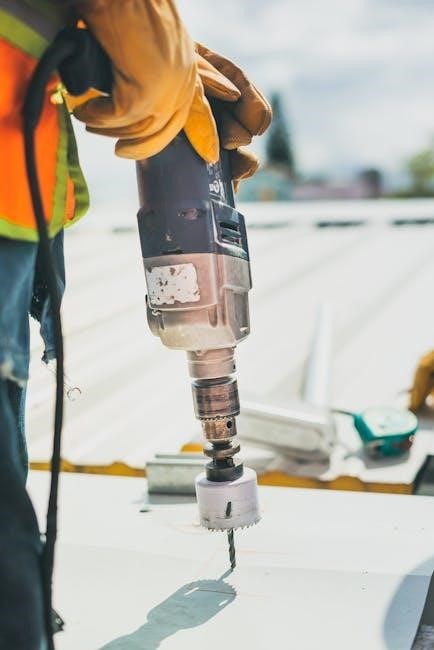
System Overview
The Amana S-Series is a high-efficiency heating and cooling system designed for residential and light commercial applications. It offers a range of models, from 1.5 to 3.0 tons, ensuring compatibility with various installation requirements; The system includes advanced components such as air handlers, coils, and optional enhancements like communicating thermostats. Its modular design allows for flexible installation in different home layouts, while maintaining energy efficiency and performance. The S-Series is known for its reliability, quiet operation, and adaptability to diverse climate conditions. With a focus on user convenience, the system integrates seamlessly with smart home technologies, providing precise temperature control and energy savings. Whether for new constructions or retrofits, the Amana S-Series delivers a robust solution for modern heating and cooling needs.
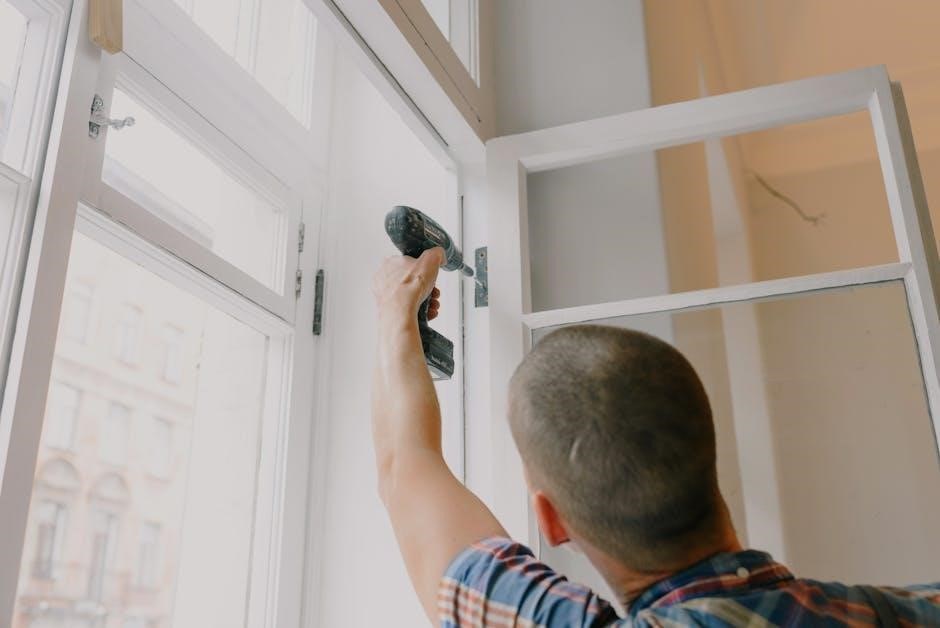
Safety Precautions and Symbols
Safety precautions are crucial for preventing hazards during installation and operation. Understand all symbols and warnings provided in this manual to ensure safe handling and compliance with regulations.
3.1 Safety Symbols Explained
The Amana S-Series manual uses specific symbols to indicate potential hazards. The warning symbol ⚠ alerts users to possible dangers, while the caution symbol △ highlights important safety information. Proper understanding of these symbols ensures safe installation and operation. Additionally, fire hazard symbols ⚡ and prohibited actions ✖ are included to prevent risks. Always refer to the manual for detailed explanations to avoid accidents. Compliance with these guidelines is essential for maintaining system efficiency and user safety. By adhering to the symbols and instructions, installers can minimize risks and ensure a successful setup.
3.2 Essential Safety Precautions
When installing the Amana S-Series, it is crucial to follow essential safety precautions to avoid accidents and ensure proper system operation. Always disconnect power before starting any installation or maintenance tasks. Use appropriate personal protective equipment, such as gloves and safety glasses, to prevent injuries. Ensure the system is properly grounded to avoid electrical hazards. Never operate the unit in areas with standing water, as this can lead to electrical shock or damage. Follow all local and national safety codes, and consult the manual for specific guidelines. Improper installation, such as incorrect duct sizing or improper refrigerant handling, can result in system malfunctions or safety risks. Use flame-retardant materials for ductwork and seal connections securely to prevent fire hazards. By adhering to these precautions, installers can ensure a safe and efficient setup of the Amana S-Series system.
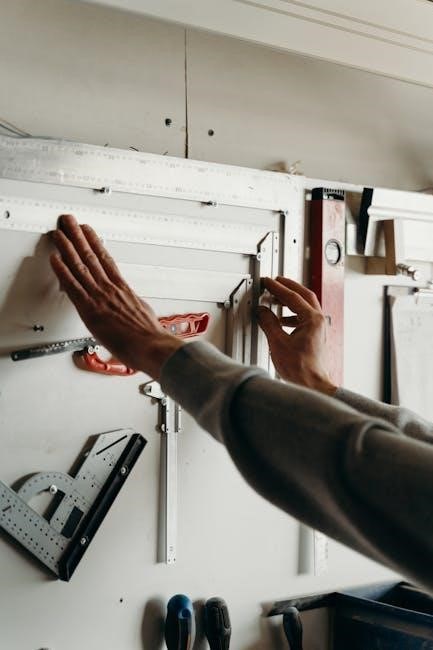
Installation Process
The Amana S-Series installation involves site preparation, unit mounting, duct connections, electrical setup, refrigerant line installation, and thermostat connection. Follow manual guidelines for precise steps and start-up testing.
4.1 Site Preparation Requirements
Proper site preparation is essential for a successful Amana S-Series installation. Ensure the installation area is clean, dry, and level. Verify that the unit’s location allows for adequate airflow and meets local building codes. Check for proper electrical and plumbing connections nearby. Ensure the area is clear of debris and obstructions. Verify that all necessary tools and materials are available. Follow the manufacturer’s guidelines for floor and wall mounting. Ensure the site complies with safety standards. Check for proper drainage and ventilation. Ensure the area is accessible for service and maintenance. Follow the installation manual for specific site requirements. Proper preparation ensures a safe and efficient installation process. Always refer to the manual for detailed instructions and safety precautions.
4.2 Mounting the Unit
Mounting the Amana S-Series unit requires careful planning and adherence to manufacturer guidelines. Ensure the unit is installed on a level surface, such as a wall or floor, using appropriate hardware. For wall mounting, use sturdy brackets and ensure the structure can support the unit’s weight. For floor mounting, verify the surface is even and stable. Use vibration isolators to minimize noise and prevent damage. Follow local building codes and manufacturer recommendations for securing the unit. Avoid over-tightening fasteners, as this may damage the unit. Ensure the mounting area allows for proper airflow and easy access for maintenance. Always refer to the installation manual for specific mounting instructions and safety precautions; Proper mounting ensures the unit operates efficiently and safely, adhering to all relevant standards and guidelines.
4.3 Duct Connections and Sizing
Proper duct connections and sizing are critical for optimal performance of the Amana S-Series system. Ensure ductwork is sized according to ACCA Manual D, Manual S, and Manual RS guidelines to match the unit’s capacity. Use flame-retardant ductwork and seal all connections securely to prevent leaks. Proper sealing ensures efficient airflow and prevents energy loss. Install ducts in a way that minimizes bends and obstructions, as these can reduce system performance. Refer to the installation manual for specific duct sizing recommendations based on the unit’s tonnage and airflow requirements. Incorrect duct sizing can lead to reduced efficiency, increased noise, and potential system damage. Always follow local building codes and manufacturer specifications for duct installation. Proper duct connections and sizing ensure the system operates efficiently, providing consistent heating and cooling throughout the space.
4.4 Electrical Connections
Proper electrical connections are essential for the safe and efficient operation of the Amana S-Series system. Ensure all connections comply with national and local electrical codes. The system requires a dedicated 240-volt power supply, with the correct wire size as specified in the installation manual. Proper grounding is mandatory to prevent electrical hazards. Install a fused disconnect or circuit breaker near the unit for easy servicing. Use a grounded power cord or hardwire the unit, ensuring all connections are secure and weatherproof if installed outdoors. Turn off the power at the circuit breaker before performing any electrical work. Improper electrical connections can lead to safety hazards, system malfunctions, or void the warranty. Always consult a licensed electrician if unsure about any aspect of the electrical setup. Follow the manufacturer’s guidelines for wiring and connections to ensure reliability and performance.

4.5 Refrigerant Line Installation
Proper installation of the refrigerant lines is critical for the efficient operation of the Amana S-Series system. Follow the manufacturer’s guidelines and local regulations to ensure compliance. The refrigerant lines must be appropriately sized and insulated to minimize heat transfer and prevent energy loss. Use only approved materials and connections to avoid refrigerant leaks. Before brazing, ensure the lines are clean and free of moisture to prevent contamination. After installation, thoroughly inspect the lines for any signs of damage or leaks. Use a vacuum pump to evacuate the system before charging with refrigerant. Properly label the refrigerant lines to avoid confusion during servicing. Refer to the installation manual for specific instructions on line sizing, routing, and connection procedures. Improper installation can lead to reduced system performance, increased energy consumption, or potential safety hazards.
4.6 Thermostat Installation
Installing the thermostat for the Amana S-Series system requires careful attention to detail to ensure proper system control and functionality. Begin by selecting a suitable location for the thermostat, avoiding areas with direct sunlight, drafts, or extreme temperatures. Follow the wiring diagram provided in the installation manual to connect the thermostat to the system. Ensure all connections are secure and properly labeled to avoid errors. If using a programmable or smart thermostat, refer to the manufacturer’s instructions for configuration. Test the thermostat by running through a heating and cooling cycle to confirm proper operation. For advanced models, such as the optional communicating thermostat, additional setup steps may be required to integrate with the S-Series system. Always refer to the thermostat’s installation manual for specific instructions and compatibility guidelines with the Amana S-Series.
4.7 Testing and Start-Up Procedures
After completing the installation, perform a thorough system test to ensure proper operation. Start by verifying all electrical connections and controls are secure and correctly configured. Power on the system and test each mode (heating, cooling, and fan) to confirm functionality. Check for any unusual noises, vibrations, or leaks in the refrigerant lines. Use a vacuum gauge to ensure the system holds the correct pressure, and verify airflow by checking filter installation and duct connections. Refer to the installation manual for specific start-up procedures and guidelines. Monitor the system during initial operation to identify and address any issues promptly. Proper testing ensures the Amana S-Series operates efficiently and safely, meeting the designed performance standards.
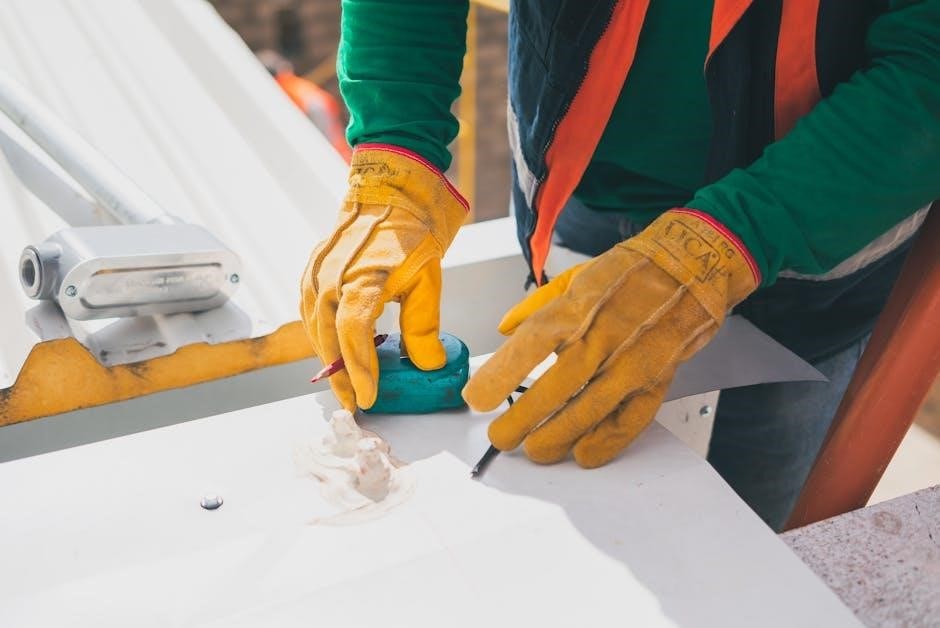
Technical Specifications
The Amana S-Series offers models ranging from 1.5 to 3.0 tons, with SEER ratings up to 16 and AFUE ratings up to 90%. Units are designed for high efficiency and durability, meeting industry standards for performance and energy savings. Refer to the product specifications for detailed capacity, voltage, and compatibility details to ensure proper system selection and installation. Compliance with local building codes and regulations is essential for optimal performance.
5.1 General Specifications
The Amana S-Series systems are designed to provide efficient heating and cooling solutions across various capacities. Available in sizes from 1.5 to 3.0 tons, these units are suitable for both residential and light commercial applications. They feature high-efficiency compressors and advanced fan motors, ensuring quiet operation and energy savings. The units are compatible with a range of thermostats, including smart and communicating models, for enhanced control and performance. With durable construction and corrosion-resistant components, the S-Series systems are built to withstand harsh weather conditions. They meet or exceed industry standards for performance and safety, offering a reliable solution for HVAC needs. Proper installation, as outlined in the manual, is crucial to ensure optimal performance and warranty compliance.
5.2 Capacity and Performance Data
The Amana S-Series systems are available in capacities ranging from 1;5 to 3.0 tons, with an enhanced capacity model at 2.0 tons. These units deliver reliable performance with high-efficiency compressors and advanced fan motors, ensuring consistent airflow and temperature control. The systems are designed to meet industry standards for energy efficiency, providing cost-effective heating and cooling solutions. Airflow capabilities are optimized to handle a variety of duct configurations, ensuring proper circulation in both small and large spaces. The S-Series units also feature quiet operation, with sound levels minimized to enhance indoor comfort. Performance data, including CFM ratings and static pressure capabilities, are detailed in the manual to aid in system selection and installation. Proper sizing and configuration are essential to achieve the stated performance levels and ensure system longevity. Always refer to the installation manual for specific performance metrics and operational guidelines.
5.3 Compatibility with Other Systems
The Amana S-Series systems are designed to integrate seamlessly with a variety of components and systems, ensuring flexibility in installation and operation. These units are compatible with Amana brand thermostats, including optional communicating models, which enhance system control and efficiency. Additionally, the S-Series can be paired with other Amana brand components, such as air handlers and coils, to create a comprehensive heating and cooling solution. The systems are also compatible with standard ductwork and ventilation systems, making them adaptable to different home configurations. Furthermore, the S-Series units can be integrated with third-party systems, provided they meet the specifications outlined in the installation manual. Proper compatibility ensures optimal performance, energy efficiency, and reliability. Always refer to the manual for specific compatibility guidelines and recommendations to ensure a successful integration with other systems. This adaptability makes the Amana S-Series a versatile choice for various heating and cooling needs.
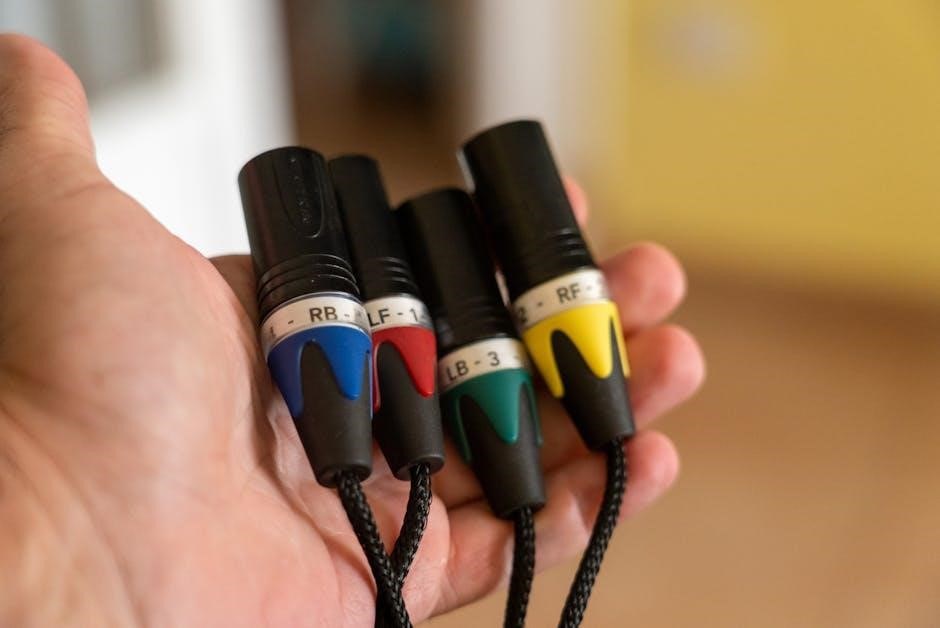
Troubleshooting Common Issues
- Identify common issues like water leakage or airflow problems.
- Refer to error codes and DIY fixes in the manual.
- Ensure proper installation and system compatibility.
6.1 Diagnosing Common Problems
Diagnosing issues with the Amana S-Series involves identifying symptoms and referencing error codes. Common problems include water leakage, airflow issues, and system performance malfunctions. Always refer to the installation manual for specific troubleshooting guides. Error codes displayed on the thermostat or control panel can help pinpoint the root cause. For example, airflow problems may indicate improper duct sizing or blockages. Water leakage could result from incorrect refrigerant line installation or condensate drain issues. Electrical malfunctions should be addressed by checking connections and ensuring compatibility with system requirements. Regular maintenance, such as filter cleaning, can prevent many issues. If DIY solutions fail, consult a professional technician. The manual provides detailed steps for diagnosing and resolving these common problems, ensuring optimal system operation and longevity.
6.2 Repair and Adjustment Procedures
Repairing and adjusting the Amana S-Series requires careful adherence to the installation manual and safety protocols. Start by powering off the system and verifying electrical connections. For refrigerant leaks, inspect lines for damage and ensure proper installation. Airflow issues may necessitate duct cleaning or resizing, referencing Manual D for guidance. Thermostat recalibration can resolve temperature inaccuracies, while capacitor issues may require replacement. If the system fails to cool, check refrigerant levels and ensure proper airflow. For complex problems, such as compressor malfunctions, professional assistance is recommended. Always follow the manufacturer’s troubleshooting guide and safety precautions to avoid further damage. Regular maintenance, like filter replacement, can prevent many issues. Adjustments should be made with precision to maintain system efficiency and performance, ensuring optimal operation and extending the unit’s lifespan.

Maintenance and Upkeep
Regular maintenance ensures optimal performance of the Amana S-Series. Clean or replace filters, inspect ducts, and check refrigerant levels. Schedule annual professional servicing to maintain efficiency and extend lifespan.
7.1 Routine Maintenance Tasks
Routine maintenance is crucial for the Amana S-Series to operate efficiently. Regularly inspect and clean air filters to ensure proper airflow. Check the condenser coils and evaporator for dirt or debris, cleaning them as needed. Inspect ductwork for leaks or damage and seal any gaps. Ensure all electrical connections are secure and verify refrigerant levels to prevent leaks. Replace worn-out parts promptly to avoid system strain. Schedule annual professional servicing to inspect internal components and ensure compliance with manufacturer guidelines. These tasks help maintain optimal performance, reduce energy consumption, and extend the system’s lifespan. Always refer to the installation manual for specific instructions and safety precautions. Regular maintenance also helps prevent unexpected breakdowns and ensures consistent heating and cooling throughout your home.
7.2 Filter Cleaning and Replacement
Regular filter cleaning and replacement are essential for maintaining the efficiency and performance of your Amana S-Series system. Turn off the power before accessing the filter. Clean reusable filters with a soft brush or vacuum, and replace disposable filters every 1-3 months, depending on usage. Dirty filters can reduce airflow, increase energy consumption, and strain the system. Always use filters of the recommended type and size to ensure proper fit and performance. Refer to your installation manual for specific instructions on locating and replacing the filter. Replace filters more frequently in dusty environments or if pets are present. Proper filter maintenance helps improve indoor air quality, reduces allergens, and prevents premature system wear. Clean filters also promote consistent heating and cooling, ensuring your home remains comfortable year-round.
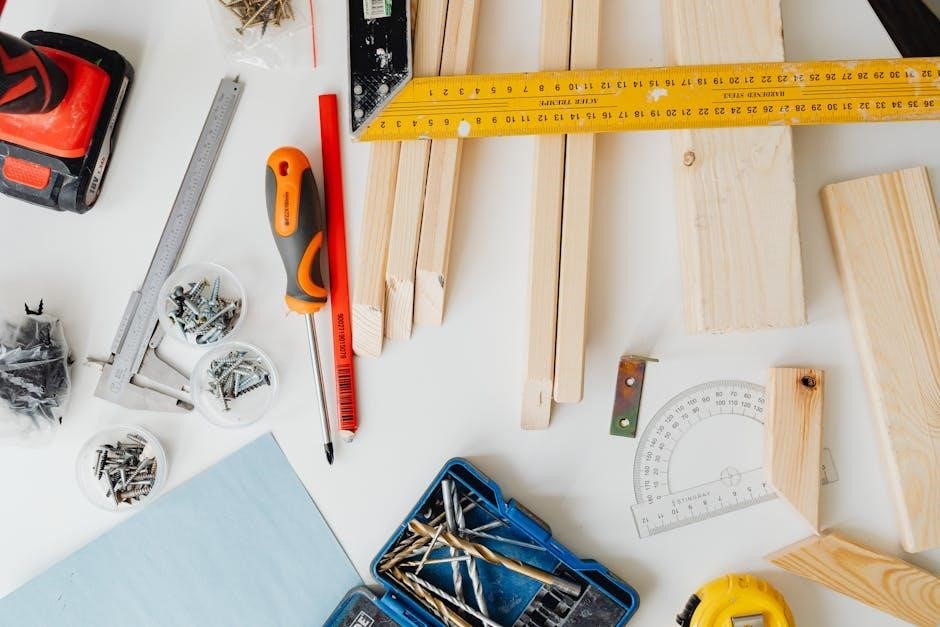
Warranty Information
The Amana S-Series system comes with a comprehensive warranty covering parts and labor. Ensure to register your product for warranty validation. Proper installation as per the installation manual is essential for warranty coverage and ensures optimal performance.
8.1 Warranty Coverage Details
The Amana S-Series warranty provides extensive coverage for parts and labor, ensuring protection for your investment. The warranty period varies depending on the specific components, with most parts covered for up to 10 years. Proper installation as outlined in the installation manual is crucial for warranty validation. Additionally, the system must be registered within 60 days of installation to activate the warranty benefits. Coverage includes repairs and replacements for defective parts, excluding normal wear and tear. For detailed terms and conditions, refer to the warranty certificate provided with your system. Ensure compliance with all specified maintenance and upkeep procedures to maintain warranty eligibility and optimal system performance.
8.2 Registering Your Product
Registering your Amana S-Series system is a straightforward process that ensures you receive full warranty benefits and priority customer support. To register, visit the Amana website and navigate to the product registration section. You will need your system’s model number and serial number, which can be found on the unit or in the installation manual. Registration must be completed within 60 days of installation to activate the warranty. Once registered, you will receive confirmation via email, and your system will be enrolled in the warranty program. This step is crucial for ensuring coverage and accessing future support. For assistance, refer to the warranty certificate or contact Amana customer service. Remember, proper registration is essential for maintaining your system’s warranty and receiving timely support when needed.
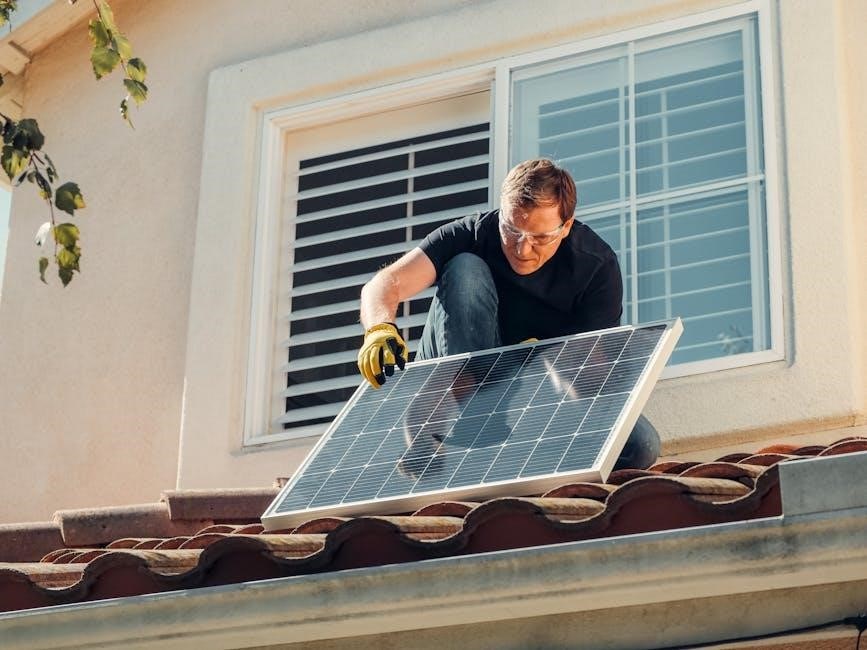
References and Further Reading
For additional guidance, refer to the Amana S-Series Installation Manual PDF, Technical Specifications PDF, and Warranty Certificate. These documents provide detailed insights and support for installation and maintenance.
9.1 Related Manuals and Guides
For comprehensive understanding, refer to the Amana S-Series Installation Manual, which provides detailed steps for setup. Supplement with the ProductSpecs and Brochure for product features. The WarrantyCertificate outlines coverage details, while the Technical Specifications PDF offers performance data. Additional resources include the Amana HAC S Series AC Installation Guide and ACCA Manual D, Manual S, and Manual RS for duct sizing and applications. The Heat Kit Installation Manual is essential for optional components. These documents ensure proper installation, maintenance, and troubleshooting. Visit the official Amana website for downloadable PDFs and additional support materials to aid in the successful setup and operation of your S-Series system.
9.2 Online Resources and Support
For additional assistance, visit the official Amana website, which offers a wealth of resources, including downloadable PDFs of manuals, brochures, and technical specifications. The site provides detailed product information, installation guides, and troubleshooting tips. Customers can access the Amana HAC S Series AC Installation Guide and other related documents directly from the website. Additionally, Amana offers online support through their customer service portal, where users can submit inquiries or find answers to common questions. The website also features a section for warranty information and registration, ensuring easy access to product protection details. For further technical support, Amana provides resources like ACCA Manual D, Manual S, and Manual RS, which cover duct sizing and application guidelines. These online resources ensure that installers and users have all the necessary tools for successful system setup and maintenance.
Thank you for following this comprehensive guide to the Amana S-Series installation manual. By adhering to the outlined steps and safety precautions, you can ensure a successful and efficient setup of your system. The Amana S-Series is designed to provide reliable, high-performance heating and cooling, making it a valuable addition to any home or commercial space. Proper installation, regular maintenance, and adherence to technical specifications are key to maximizing the system’s efficiency and longevity. For any further assistance, refer to the online resources and support provided by Amana, including downloadable manuals, technical guides, and customer service. With the right care and attention, your Amana S-Series system will deliver optimal performance for years to come. Happy installing!
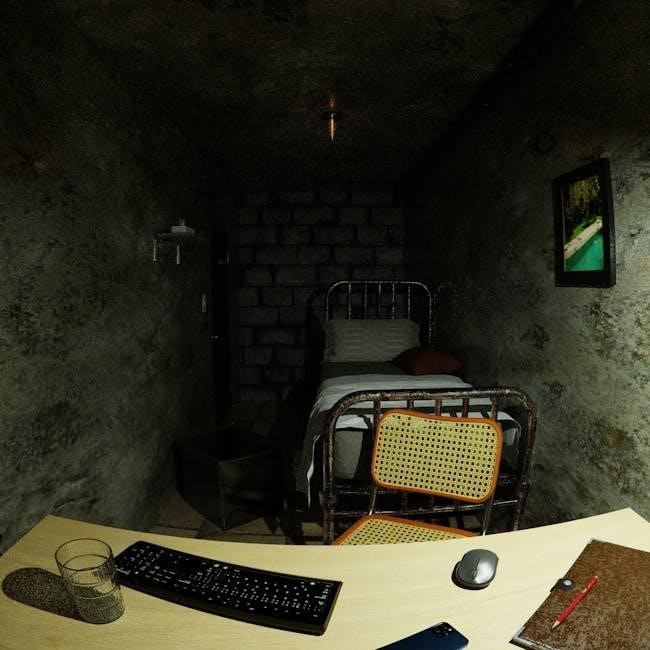
Leave a Reply
You must be logged in to post a comment.